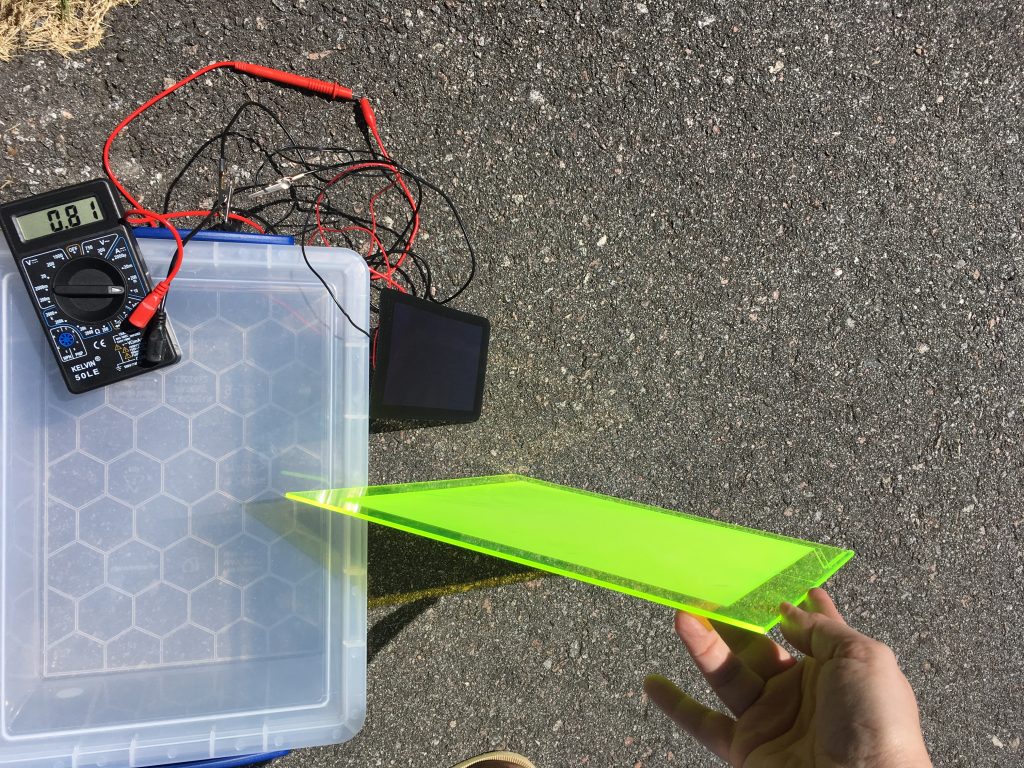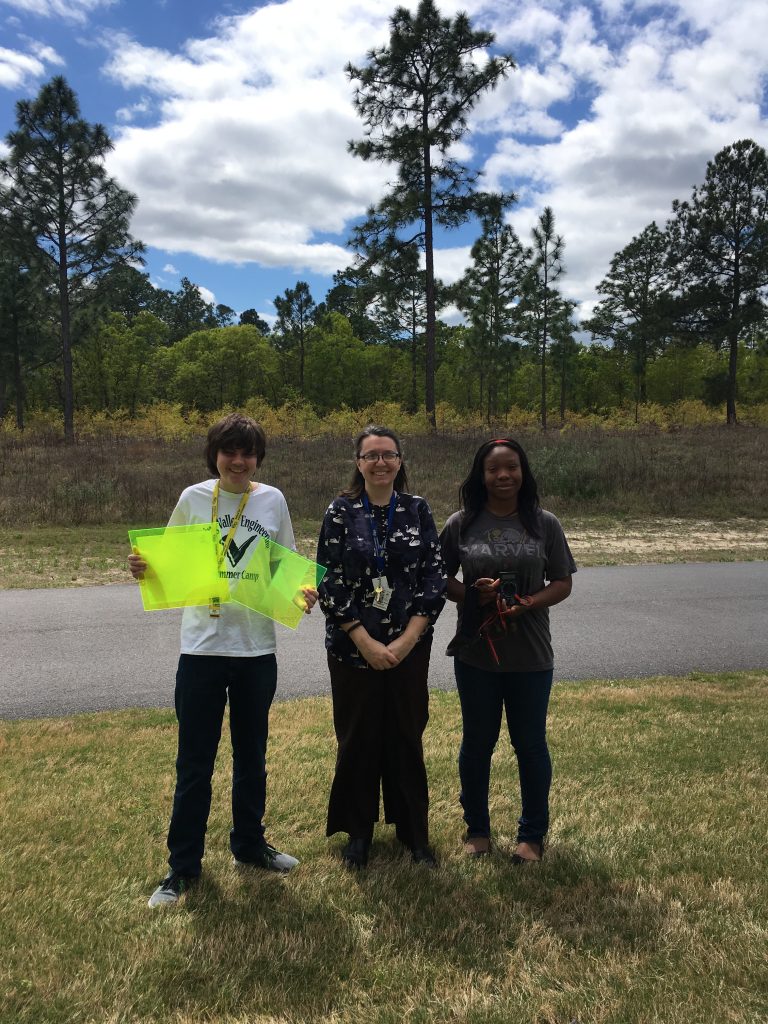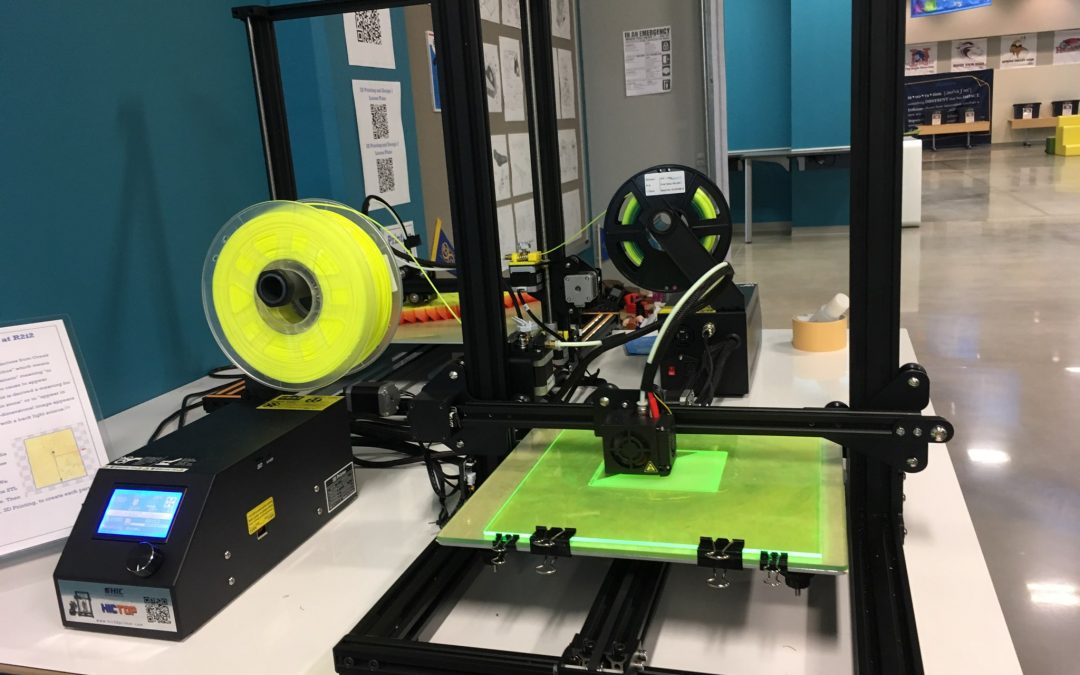By. Kirstin Bullington, Richland Two Institute of Innovation
Designing with nature in mind holds the key for many of today’s pressing environmental problems. So, it’s only natural that students should learn how to apply the concepts of biomimicry when problem-solving for the future. I was introduced to the Biomimicry Institute a few years ago when assisting a few students with sources for a wind turbine blade that they were designing. Since then, I have used their resources in classes at the Richland Two Institute of Innovation (R2i2) in Columbia, South Carolina. The Biomimicry Institute’s inaugural Youth Design Challenge (YDC) provided the perfect opportunity for a pair of my students to experience nature-inspired design thinking.
R2i2 is a districtwide student innovation center that draws students from five different high schools for advanced elective courses. Our school’s mission is to foster student growth by stimulating creativity, encouraging leadership, promoting teamwork, and building entrepreneurial skills while engaging the global community. One category of courses offered at R2i2 is Next Energy Engineering. Next Energy Engineering uses the Clean Energy Technology curriculum from the Southern Region Educational Board. These courses are completely project-based and focus on students generating solutions to energy challenges using an engineering design process. As the courses advance, students are encouraged to take more autonomy in the problems they generate and the solutions they design.
For the 2018 YDC, students were tasked to find a solution to reduce or mitigate the impacts of climate change using a design from nature. Two of my students, Victoria Alexander and Murray McDaniel, thought it would be worthwhile to see if they could increase energy efficiency by emulating biological design. The students opted to take a biomimetic approach; that is, they decided to narrow the problem to energy efficiency, then research organisms that already exhibit unique energy adaptations.
As an engineering instructor with a biology background, I was curious to see how the students fared with the biomimicry design process. The process of designing from nature is similar to the engineering design process, but with some distinct differences that made me wonder how well their mastery of engineering competencies would transfer. The students initially expressed apprehension about finding an idea. Once they started researching energy adaptations, they realized there were countless examples in nature that they could consider in making energy production more efficient. After researching several organisms and considering the criteria their solution would need to meet, the students used a decision matrix to select their best idea, the oriental hornet (Vespa orientalis), which converts solar energy into electric energy for metabolic purposes. Originally, the students thought to mimic the yellow band of the hornet as a panel overlay, but that resulted in reduced current output from the test panels. A more thorough review of the hornet’s adaptations led the students to look at the rest of the hornet’s epicuticle, the structure of which reflects sunlight onto the yellow band where the solar energy is absorbed. This idea led the students to create a solar concentrator that mimicked the pattern of the hornet’s epicuticle.

Luminescent Solar Concentrator Based on Epicuticle Design
The students’ solution was to 3D print the hornet’s epicuticle pattern directly onto a square of fluorescent acrylic to concentrate UV light on the solar panel. When the solar concentrator is placed next to a thin-film solar panel, the printed area reflects the UV light on the panel, increasing the current produced. Students drew this concept from research on traditional fluorescent solar concentrators, which use luminescent paint to concentrate absorbed UV rays and emit at longer wavelengths. The hornet’s specific brown epicuticle pattern was drawn in a CAD program, CATIA, and printed with the assistance of the 3D Printing and Design class.
Solar concentrators are not a new concept, and the oriental hornet has been studied several times for its unique energy conversions. However, the students could not find previous examples of solar concentrators making use of the hornet’s epicuticle pattern and were therefore cautiously optimistic that they had devised an innovative solution.
Testing, Results, and Modifications
A thin-film solar panel was selected for testing the concentrator, as its raised pattern is similar to the hornet’s yellow epicuticle. Trials were performed at midday, when the hornet is most active, and later in the day for comparison. In each trial, the solar fluorescent concentrator increased the measured current output when angled to reflect light directly on the panel.
The students were thrilled that their second attempt to emulate the hornet was successful and began looking for ways to improve on their design. They noticed that the reflected pattern area was smaller than the solar panel and hypothesized that they could get more current if they increased the surface area of the hornet’s pattern. This led to a reprinting of the pattern on a second piece of acrylic, increasing the pattern area to 215 cm2 (the area of the solar panel).
The results shown below demonstrate that the concentrator was successful in redirecting light to the solar panel. There was a roughly 15% increase in current with the initial concentrator area. The current output increased by 26 – 29% when the pattern was increased to cover the entire acrylic panel.
| Date & Time | Current w/o Concentrator (A) | Current with Concentrator (A) | Hornet concentrator area (cm2) | Percent change in current produced |
| 3-13-18 11:00 A.M. | 0.47 | 0.51 | 110 | +8.51% |
| 3-13-18 2:00 P.M. | 0.76 | 0.85 | 110 | +11.84% |
| 3-14-18 12:30 P.M. | 0.84 | 0.96 | 215 | +14.29% |
| 3-14-18 2:24 P.M. | 0.68 | 0.86 | 215 | +26.47% |
| 3-23-18 11:20 A.M. | 0.58 | 0.75 | 625 | +29.3% |

Lessons Learned
Although the students were hesitant about their ability to produce a biomimicry solution to climate change, they were elated when their second prototype showed demonstrated improvement in solar output – and even more so when they found out that they had won first place for high school teams in the YDC! Their confidence in their ability to design, test, and optimize energy solutions was boosted substantially from their participation in this competition, and both students will be engineering majors next fall. In my opinion, this contest helped reinforce for my students that they are capable of solving complex problems such as climate change. With this and other student design opportunities, young adults are empowered to solve the world’s most pressing problems, rather than feeling helpless in the face of daunting statistics. I have found that the more I encourage student creativity and passion for authentic problem-solving, and let them drive their own education, the more my students amaze me and exceed my expectations for their mastery of engineering competencies.
I would be remiss if I failed to credit the Biomimicry Institute’s YDC staff in their guidance throughout this process. There were several webinars and virtual office hours offered throughout the competition period to help mentors facilitate this experience. Although I had some experience with design challenges prior to our participation, their insights, particularly in how to lead students through problem and solution selection, were invaluable. The Biomimicry Institute also has a wealth of resources on their website for teaching biomimicry for a wide range of disciplines at the secondary and postsecondary levels.
Author Bio
Kirstin Bullington is a National Board Certified Teacher who has taught science and engineering for the past sixteen years. Prior to teaching, she was a health specialist volunteer in the Peace Corps, Togo. Kirstin is currently the Next Energy Engineering instructor at the Richland Two Institute of Innovation in Columbia, South Carolina, where her students design and optimize alternative energy solutions for local and global challenges. Currently, her students are collaborating with a school in Sare Bilaly, Senegal to create a solar and bioenergy modular power system as a 2018 – 2019 Lemelson-MIT InvenTeam. She enjoys travel, cooking, and spending time with her husband and two children.

